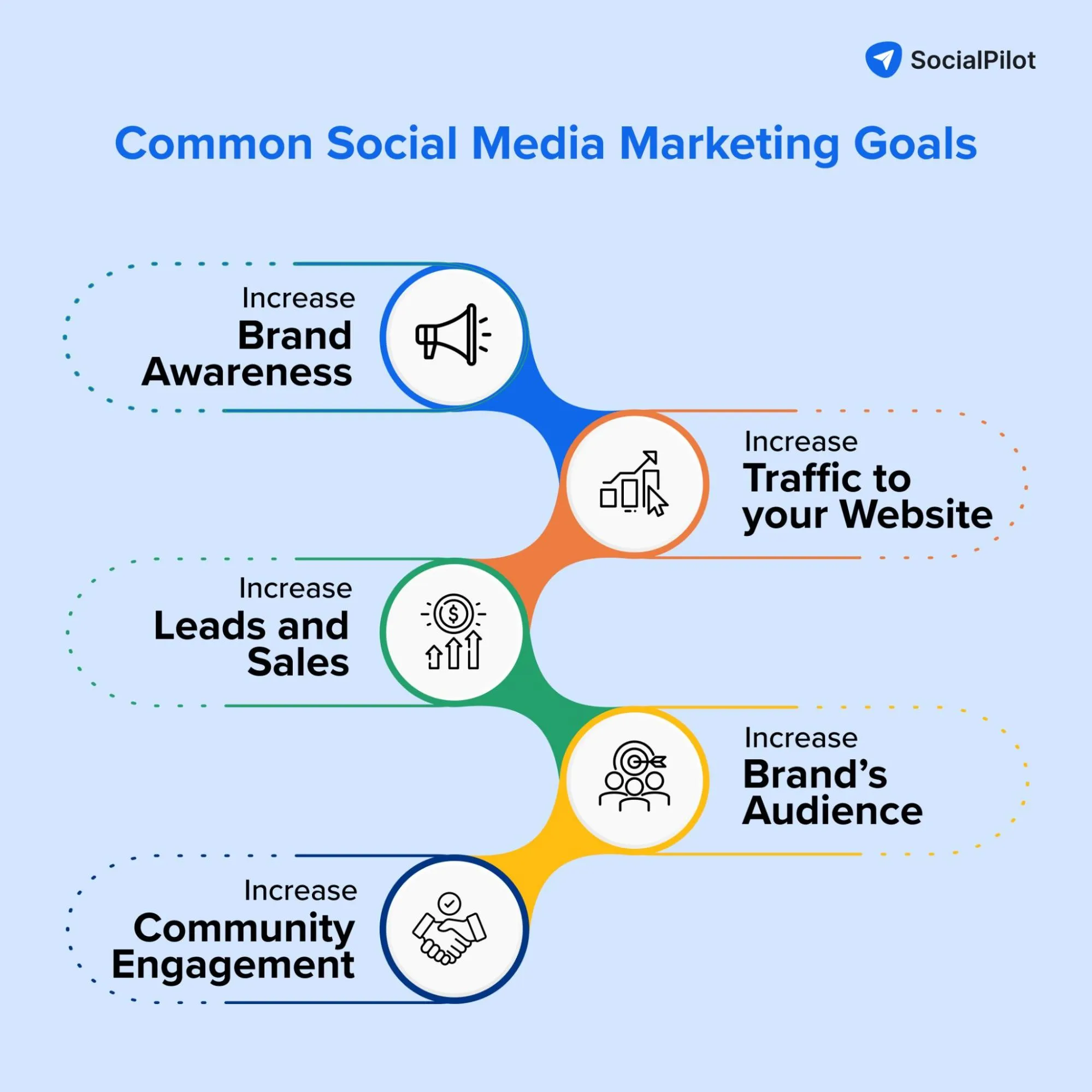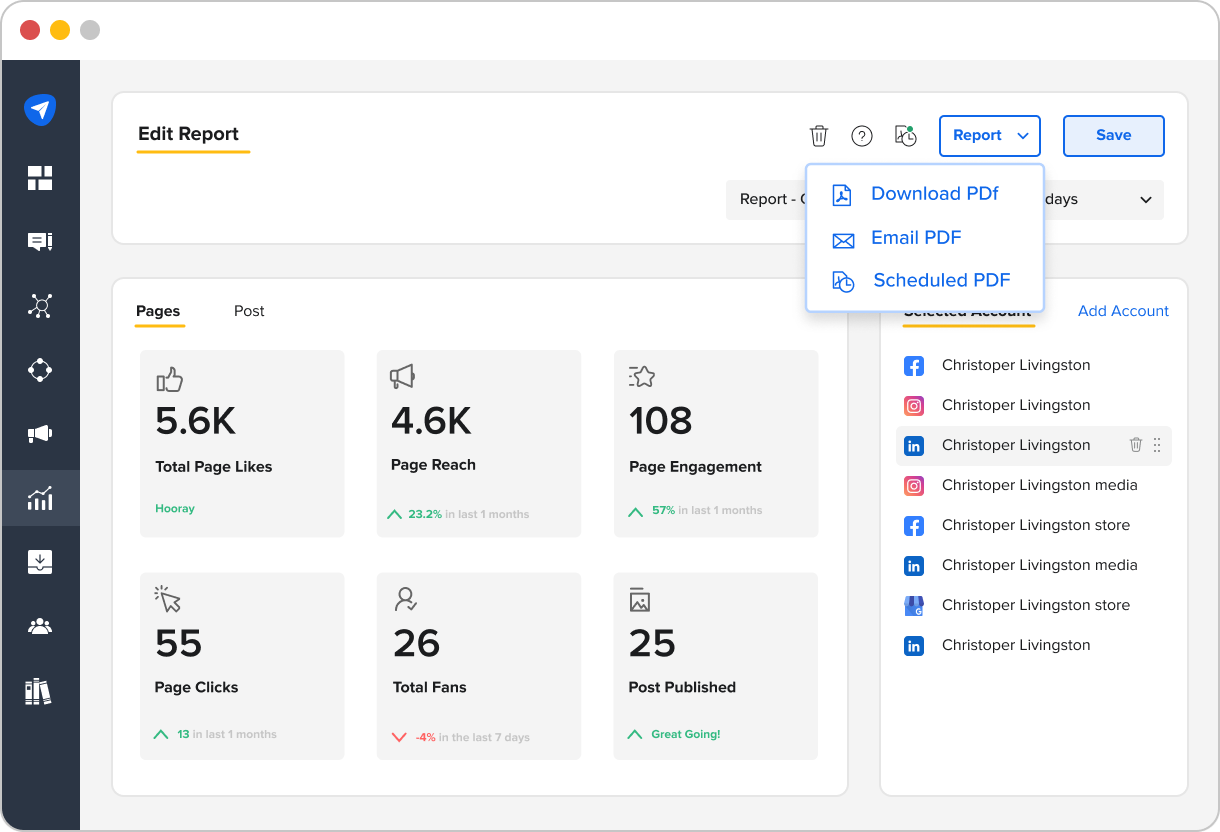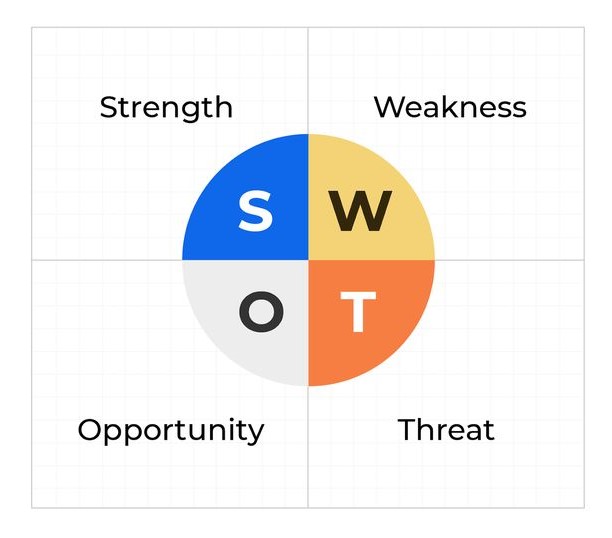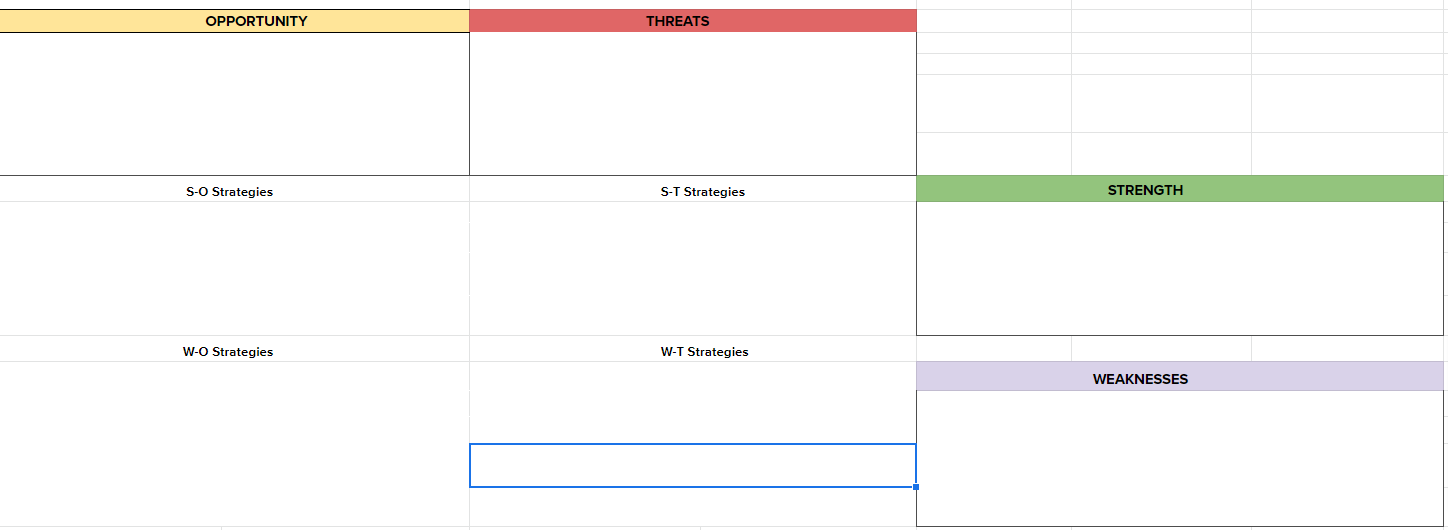How long has it been since you have run a social media audit?
If social media marketing is a crucial element of your marketing strategy (as it ought to be), understanding how to run a social media audit is imperative.
Regrettably, many businesses neglect to invest the necessary time and resources into conducting a thorough social audit.
The result?
They end up drowning in surplus money, time, and workforce in the long run.
To avoid operating your social accounts with incomplete strategies, we have developed a step-by-step guide to running a successful social media audit.
Whether you’re an agency starting with clients by assessing their social media channels or a business looking to refresh your strategies, a social media audit is indispensable.
But before we get into that, let’s answer an important question:
What is a Social Media Audit?
A social media audit is a systematic process designed to collate, assess, and analyze the performance and presence of all your social media accounts comprehensively.
The aim of a social media audit?
This is to basically discern the efficacy of your strategies by examining various social media metrics consolidating this information in one location to facilitate the formation of informed, data-driven strategies.
Simply put, a social media audit provides you insights on:
- Your top-performing social platforms
- Your most captivating content formats
- Initiatives that drive audience growth and potential hurdles
- New strategies you can deploy to reach your goals
This brings us to an important question, that is…
Why Should You Run a Social Media Audit?
If you’re hesitant to allocate time for a social media audit, it’s crucial to understand why conducting one is indispensable for enhancing your social presence.
Here’s why:
- Identify the Optimal Channel: Every brand is unique, as are the target audiences and the social media platforms they frequent. An audit clarifies which social channels are most effective for your brand and which are not, allowing you to allocate resources more efficiently.
- Understand Authentic Growth: A year-on-year or quarter-on-quarter analysis of all the right metrics across all social channels provides a transparent view of your growth trajectory, unattainable through other means. A meticulous audit also helps identify the true catalysts for growth.
- Align with Objectives: The structured approach of a social media audit allows you to monitor and assess Key Performance Indicators (KPIs) that directly correlate with your marketing objectives, ensuring your strategies are goal-oriented.
Before we discuss how to run a successful social media audit, we recommend that you download our…
Free Social Media Audit Template
Embarking on your first social media audit may seem overwhelming. To assist, we’ve crafted a free social media audit template to streamline this process and enhance efficiency.
While our audit template is equipped with all the essential metrics, we understand that every audit may have unique objectives. That’s why we’ve included customizable sections, enabling you to integrate metrics that align with your specific needs.
Click the banner below to start auditing!
How to Run a Social Media Audit?
Regardless of the nature of your or your client’s business, if there’s a social media presence, the audit process delineated below will be applicable. You’ll likely traverse through the ensuing steps as you embark on your inaugural audit.
To facilitate a smooth auditing experience, it’s advisable to download our social media audit template. Utilize it to document the information articulated in each step, ensuring a cohesive and comprehensive auditing process.
Step 1: Compile All Your Social Profiles
Begin by assembling all the social media profiles in your or your client’s name and cataloging them in the sheet.
Does this seem rudimentary? Yes. But…
You will be well aware of all your social media profiles. This crucial step is to ensure there are no inactive profiles, created and forgotten long ago, are overlooked.
You might also uncover unofficial accounts representing your brand created by affiliates or impostors. Identifying and closing these is essential. The goal here is to consolidate a comprehensive list of all your social profiles in one location, enabling efficient supervision and the exploration of new or missing opportunities on any channel.
Therefore, prepare to delve into a meticulous search for your brand name on Google and every other social media network. Whether conducting an Instagram audit or taking stock of your Facebook pages, every network is important.
Step 2: Rectify Branding Inconsistencies
Having compiled the list of all your social media accounts, it’s imperative to ensure that each one reflects consistent branding.
Why?
Maintaining uniform branding is pivotal as it fortifies trust and credibility amongst your audience. Therefore, verify that every social channel is current and exhibits a consistent look and voice across all creatives, promotions, and campaigns. Examine the uniformity in your social profiles across all platforms meticulously.
Look at how SocialPilot maintains its branding across various platforms like Facebook, Instagram, and X (formerly Twitter).

What are these elements you should scrutinize on all social channels to ensure consistency?
- Profile and cover images
- Profile bios
- Profile descriptions
- Pinned posts
- Destination URLs and landing pages
- Brand and campaign hashtags
- Verification statuses
Step 3: Establish Your Social Media Goals
Conducting an audit without clear goals is akin to driving a car through a pitch-black freeway without headlights.
Diving into the insights of any social media channel will a plethora of social metrics. So, should every one of them be evaluated, be it an Instagram audit or a Twitter profile?
Maybe or maybe not.
This is where the need for clear social goals comes in. By setting appropriate social media goals for each platform, pinpointing relevant KPIs to include and assess in your social media audit becomes a more streamlined process. It’s crucial to remember that different social channels warrant different goals.

Whether it’s augmenting your follower count, boosting conversions, or fostering a community, having well-defined goals will guide the direction of your audit effectively.
Step 4: Identify Your KPIs
With your goals clearly outlined, pinpointing the pertinent key metrics to monitor in your social media audit becomes a more straightforward task. Below is the breakdown of Instagram metrics that can be incorporated into your audit report, contingent on your goals.
For instance, if one of your objectives is to increase engagement on Facebook, it’s essential to track KPIs like engagement rate, comments, likes, and shares.
What are some of the common and important social-specific metrics that you can include in the audit?
- Account information
- Engagement metrics
- Publishing metrics
- Audience demographics
- Referral traffic
Refer to the KPIs table included in our social media audit template; simply input the relevant figures.

Here’s something you should also remember:
The primary objective of your inaugural audit is to delineate the existing state of your social media presence and establish a benchmark for subsequent audits. Therefore, your audit must showcase the month, quarter, or year-over-year percentage change of different metrics.
Why?
- Timely tracking will allow you to spot regular seasonal changes
- It gives you a better picture of growth with time
- Helps in making timely changes
Are you looking for a straightforward way to track down the metrics of multiple clients for auditing? Look no further!
With SocialPilot’s analytics, effortlessly track metrics across various channels from one centralized location. The advanced reports feature also allows you to merge reports from different channels into a single downloadable PDF that you can schedule for sharing in just one click. Simplify your client account audits with SocialPilot.

Step 5: Identify Your Top-Performing Social Content
The core objective of a social media audit is to create content that brings value to your customers and returns to your investments. Hence, it’s crucial to discern which content types are already garnering positive reviews and then intensify your focus on those.
Ask yourself, what is it that your audience is gravitating towards?
Is it the information-rich videos, polls, questions, chats, or memes?
Another way to put it – which posts are helping you achieve your social media goals?
To answer these questions, delve deeply into your analytics to determine which social media posts are achieving the highest levels of engagement, impressions, and reach.
If you’re looking for a more streamlined approach, SocialPilot’s analytics can provide you with insights on your best-performing posts and the most effective hashtags for multiple accounts, all in one place.
Additionally, consider the best time to post on social media for each of your accounts. Having all this information will help you create a winning social media calendar with high-performing content.
Step 6: Determine Your Social Media ROI
To genuinely comprehend the value your social media marketing contributes to the business, it’s essential to calculate your social media return on investment (ROI).
Why?
Simply put, social media marketing ROI illustrates what you gain from the resources—money, time, and effort—invested in social media marketing. However, it’s crucial to acknowledge that not every endeavor on social media can be monetized directly. In such instances, it’s vital to quantify non-monetary metrics that align with your social goals.
Step 7: Analyze the Audit Using SWOT Analysis
At this juncture, your social media audit template should be meticulously completed.
The pivotal task that ensues is analyzing the audit to formulate a strategic blueprint for your social media marketing.
The whole idea of the exercise?
This is to ascertain your current standing and strategize the path forward.
By examining the time-over-time percentage variations in your key metrics, you can assess the current state of your social media efforts. A comprehensive overview of your social media audit template will also highlight the thriving social platforms and pinpoint those necessitating focused attention.
What’s next?
Build a new plan with the help of SWOT analysis.

A SWOT analysis is a pivotal method to discern current strengths, weaknesses, opportunities, and threats, facilitating the creation of an actionable plan to enhance your social media presence.
How to Conduct a SWOT Analysis?
To perform a SWOT analysis, segregate your analysis into four distinct sections:
- Strengths: Identify the strong points of your social media presence, such as high engagement rates or a well-established brand voice.
- Weaknesses: Recognize the areas that need improvement or are lacking, like inconsistent posting or low follower count.
- Opportunities: Explore potential areas for growth and development, such as new social media platforms or untapped audience segments.
- Threats: Determine external factors that could pose challenges, like competitors or changes in platform algorithms.
Our audit template provides a well-organized space to conduct your SWOT analysis seamlessly, allowing for a structured and comprehensive evaluation.

Social Media Audit Example
Having delineated every step to crafting a comprehensive social media audit, let’s illustrate it with a practical example. We will conduct a hypothetical social media audit for a small bakery business, “Heavenly Bites.” This example will elucidate the practical aspects of a social media audit, clarifying how each step in the template will translate into actionable insights.
Let’s start with the…
1. Introduction
Social Media Audit for Heavenly Bites
Date Range: September 12, 2023.
2. Platfrom/Accounts Information
Platforms Audited: Facebook, Instagram, Pinterest, X
Consistency in Usernames Across Platforms: Yes
Consistency in Profile Image/Logo Across Platforms: Yes
Bio/Description: Updated with the latest address and offer: Yes
3. Followers (with YOY change)
Facebook: 2,500 (+12% YOY)
Instagram: 4,000 (+20% YOY)
Pinterest: 800 (+5% YOY)
X: 1,200 (-2% YOY)
4. Engagement Rates (over the past month, with YOY change)
Facebook: 5% (+1% YOY)
Instagram: 8% (+3% YOY)
Pinterest: 3% (-1% YOY)
X: 4% (No change YOY)
5. Top Performing Posts (past month)
Facebook: ‘New Pastry Launch’ post – 350 likes, 40 comments
Insight: The success of this post indicates that our audience is interested in knowing about new product launches. The use of high-quality images of the pastry and a special introductory offer added to the increased engagement.
Instagram: ‘Behind the scenes’ story – 2,500 views
Insight: Behind-the-scenes content, showing the baking process or the team at work, resonates with our audience. This format humanizes our brand and creates a sense of trust.
Pinterest: ‘Wedding Cake Design’ pin – 150 repins
Insight: Wedding and festive cake ideas get traction on Pinterest as people use the platform to plan or get inspired. Also, the aesthetic appeal of the cake design likely captivated users.
X: ‘Flash Sale Announcement’ tweet – 120 retweets, 80 likes
Insight: Our Flash sales or limited-time offers are performing the best on X. Possibly because of the real-time and concise nature of the platform.
6. Response Rate and Time
Average response time: Three hours
Response rate: 90% (+10% YOY)
7. Referral Traffic to the Website (with YOY change)
From Facebook: 500 visits (+15% YOY)
From Instagram: 400 visits (+25% YOY)
From Pinterest: 200 visits (+10% YOY)
From X: 100 visits (-5% YOY)
8. ROI Metrics
Total Ad Spend (past month): $500 (+10% YOY)
Sales from Social Media Referrals: $3,000 (+20% YOY)
9. SWOT Analysis
Strengths
- Our posts on Instagram are receiving good engagement, generating an average of 500 likes and 50 comments daily.
- The bakery’s color scheme and logo are consistent across all platforms, providing instant brand recognition.
- Positive reviews received on Facebook are boosting our reputation and trustworthiness.
Weaknesses
- While our content on Instagram is frequent, we only share updates on Twitter and Pinterest once a week.
- The follower count on Facebook has been stagnant for the past four months.
- Many customers tag the bakery in their posts, but we rarely re-share or engage with these posts.
Opportunities:
- We can use video platforms like TikTok to showcase behind-the-scenes content.
- Partnering with local influencers or cafes could introduce “Heavenly Bites” to a broader audience.
- Organizing monthly bakery events or workshops and promoting them on social media can increase in-store footfall and online engagement.
Threats:
- Newer bakeries in the area are very active on social media, offering promotions and discounts.
- A few customers have left negative reviews about a particular pastry, which might deter potential customers.
- Changes in social media algorithms can affect post visibility, potentially reducing engagement.
10. Proposed Improvement and Action Plan
Proposed Improvement
- Boost presence on Instagram to capitalize on the already existing higher engagement and YOY growth.
- Consider running ads on Pinterest, as the platform has potential but shows a decline in YOY engagement.
- Respond faster to queries and comments to further increase the response rate.
Action Plan:
- Collaborate with local influencers on Instagram for more reach.
- Test Pinterest ads targeting wedding planners.
- Use social media monitoring tools to increase the response rate.
This “Heavenly Bites” example provides practical insights into conducting and documenting a social media audit. Remember, your audit KPIs will be contingent on the goals set before initiating the audit, which may vary from the ones discussed above.
Now that you’re well equipped with all the information you need to conduct a social media audit let’s provide you with a quick checklist to help you cover all the important bases.
Social Media Audit Checklist for Future Audits
Let’s do a quick rundown of the social media checklist that you can utilize for quick future audits.
Compile All Social Media Accounts:
- List all active and inactive accounts.
- Correct branding inconsistencies.
- Ensure brand messaging and completeness.
Define Clear Social Media Goals:
- Establish measurable objectives.
- Identify valuable KPIs.
Conduct Audience Research:
- Understand audience demographics and preferences.
- Tailor content strategy to audience needs.
Identify Top-Performing Content:
- Evaluate content performance.
- Create more resonant and effective content.
Assess Engagement Rate:
- Gauge engagement rate regularly.
- Optimize engagement strategies based on trends.
Monitor Posting Frequency:
- Analyze posting frequency and engagement patterns.
- Adjust the posting schedule based on insights.
Evaluate Referral Traffic:
- Note referral traffic from each social channel.
- Optimize channels driving the most traffic.
Conduct a Detailed SWOT Analysis:
- Acknowledge current growth and areas of improvement.
- Develop an actionable future plan based on SWOT analysis.
Use a Curated Audit Template:
- Utilize a curated social media audit template for efficiency.
Set Clear and Measurable Goals:
- Establish SMART goals for each platform.
Assess Platform-Specific Performance:
- Evaluate the performance of each platform individually.
Review and Respond to Customer Feedback:
- Regularly review and respond to customer feedback.
- Adjust strategies based on feedback.
Ready, Set, Audit!
Elevating your brand’s social media presence hinges on a strategy informed by rich, actionable data.
A social media audit is your gateway to such invaluable insights, enabling you to refine and optimize your approach across various platforms. The steps provided are your roadmap to conducting a comprehensive audit, ensuring your strategies are always aligned with the dynamic digital landscape.
Remember, regular audits are key to staying ahead, allowing you to seize new opportunities and address any setbacks promptly.
And, when you’re ready to implement your audited strategies, tools like SocialPilot are your allies in seamless growth, offering unmatched scheduling, analytics, and collaboration features.
Dive in with a free trial or schedule a demo experience the transformative impact of SocialPilot on your social media endeavors!



